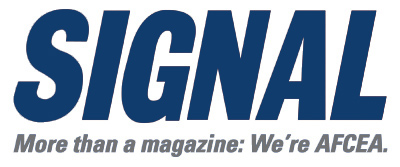Amateur radio, often referred to as ham radio, is practiced across the globe by hobbyists and enthusiasts. And they are often every bit the expert as professional military communicators and signalmen. The term “amateur” refers not to their technical acumen but to the private, nonbusiness use of allocated radio bands by those possessing amateur radio licenses. Further, while voice communication mode is the most common use of ham radio, such operators can also send and receive text, images and data. Based on technical specifications and applied technique, ham radio operators can send and receive communications across the world, across multiple bands. --Maj. Brian Kerg, USMC, is a Marine Corps officer and writer currently serving as the fleet amphibious communications officer, U.S. Fleet Forces Command..2021
The joint force is regularly called upon to conduct operations below the threshold of decisive combat, often in response to escalating tensions or natural disasters. In such contingencies, regularly available communications networks are commonly unavailable. The Internet, cellphones and other networks dependent upon terrestrial facilities become overloaded or knocked out of service. Consequently, crisis action planners are handicapped in their efforts to coordinate with key officials on the ground, as well as limited in the amount of local intelligence they can collect to support timely and appropriate action.
While such complex and brittle networks succumb to fracture, organic means of communication remain available and abundant—if only planners know where to look and how to tap into it. Amateur radio, often referred to as ham radio, is practiced across the globe by hobbyists and enthusiasts. And they are often every bit the expert as professional military communicators and signalmen. The term “amateur” refers not to their technical acumen but to the private, nonbusiness use of allocated radio bands by those possessing amateur radio licenses. Further, while voice communication mode is the most common use of ham radio, such operators can also send and receive text, images and data. Based on technical specifications and applied technique, ham radio operators can send and receive communications across the world, across multiple bands.
The Defense Department does have a mechanism by which to employ amateur radio operators and connect joint planners with key nodes in the area of operation. The Military Auxiliary Radio System (MARS) is a Defense Department-sponsored civilian auxiliary of amateur radio operators that actively supports military operations. Notably, military aircrews remain capable of using MARS phone patches through high frequency radios when satellite communications are unavailable.
However, use of MARS remains a largely unknown or niche capability, one that is usually stumbled upon by planners in the moment of crisis and then poorly implemented. Awareness of MARS was further hampered with the closing of Navy and Marine Corps MARS components in 2015. Only the Army and Air Force retain formal ties to MARS. Consequently, while the department has the means by which to establish communications networks in denied and degraded command and control environments, this resource remains underutilized. Instead of harvesting an organic communications resource in such crises, joint planners struggle through limited communications and intelligence challenges as they fight for access to high-demand, low-density resources such as satellite phones.
The joint force can rectify this cheaply and simply by providing awareness of ham radio networks to joint planners and facilitating greater access to amateur radio training for military radio operators. Communications and signal planner courses across the services can integrate instruction regarding MARS, and how to employ it, in as little as a 15-minute block from the training schedule. Field radio operator courses can similarly provide an initial exposure to amateur radio, paired with the key lesson that local nationals in any environment to which they might deploy will likely be employing ham radio. Commands can sponsor local chapters of amateur radio enthusiasts, use white space in the field to practice amateur radio techniques and provide a path for operators to pursue an amateur radio license. The wide variety of annual amateur radio competitions can further incentivize military operators to improve their amateur radio skills while inevitably improving proficiency in their mission-essential tasks.
As future threats continue to evolve, day-to-day communications architectures will become more unreliable in times of crisis. It is imperative that joint communications planners turn to ‘amateurs’ to remain experts. By building awareness of how to employ MARS and training military radio operators in ham radio technique, leaders will ensure their planners are proactively leveraging the organic amateur communications networks that abound across the globe.
Maj. Brian Kerg, USMC, is a Marine Corps officer and writer currently serving as the fleet amphibious communications officer, U.S. Fleet Forces Command. He is a nonresident fellow at Marine Corps University’s Brute Krulak Center for Innovation and Creativity. Follow or contact him @BrianKerg.
